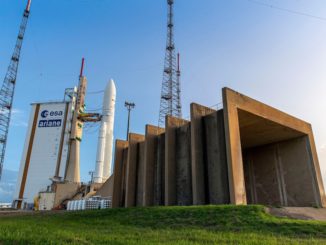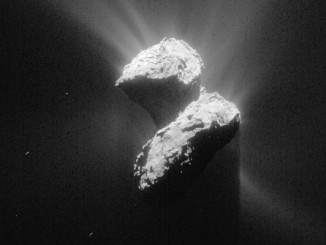An Ariane 5 rocket rolled out to its tropical launch pad in French Guiana this week leading up to Thursday’s launch of four Galileo navigation satellites for the European Commission.
The 165-foot-tall (50-meter) rocket make the 1.7-mile (2.7-kilometer) trip to the ELA-3 launch zone Tuesday mounted on a mobile launch platform. Four satellites for Europe’s Galileo navigation network are bolted on top of the rocket for liftoff Thursday at 1306 GMT (8:06 a.m. EST; 10:06 a.m. French Guiana time).
Thursday’s launch is the first Ariane 5 flight in support of the Galileo program, which aims to field an independent navigation network alongside the U.S. military’s GPS constellation, Russia’s Glonass system and China’s Beidou fleet.
The Ariane 5 ES rocket slated to launch the Galileo satellites is modified specifically to loft the European navigation payloads. Besides the dispenser built to hold the Galileo satellites, it has a restartable Aestus upper stage engine, a shortened payload fairing, and a lighter version of the Ariane 5’s vehicle equipment bay, a structure that houses much of the rocket’s guidance system.
The photos below show the Ariane 5 emerging from the final assembly building at the Guiana Space Center and making the trip to the launch pad.
Read our launch preview for more information on the mission.
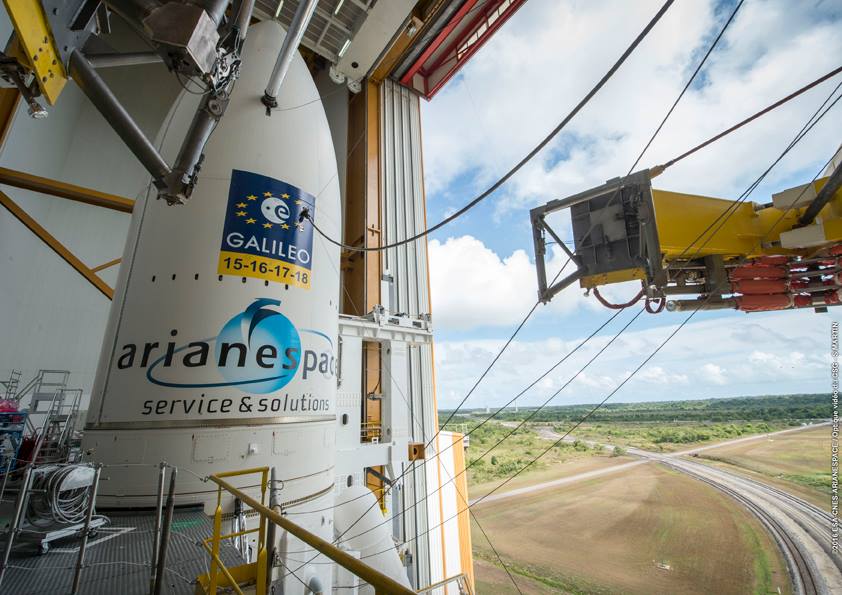
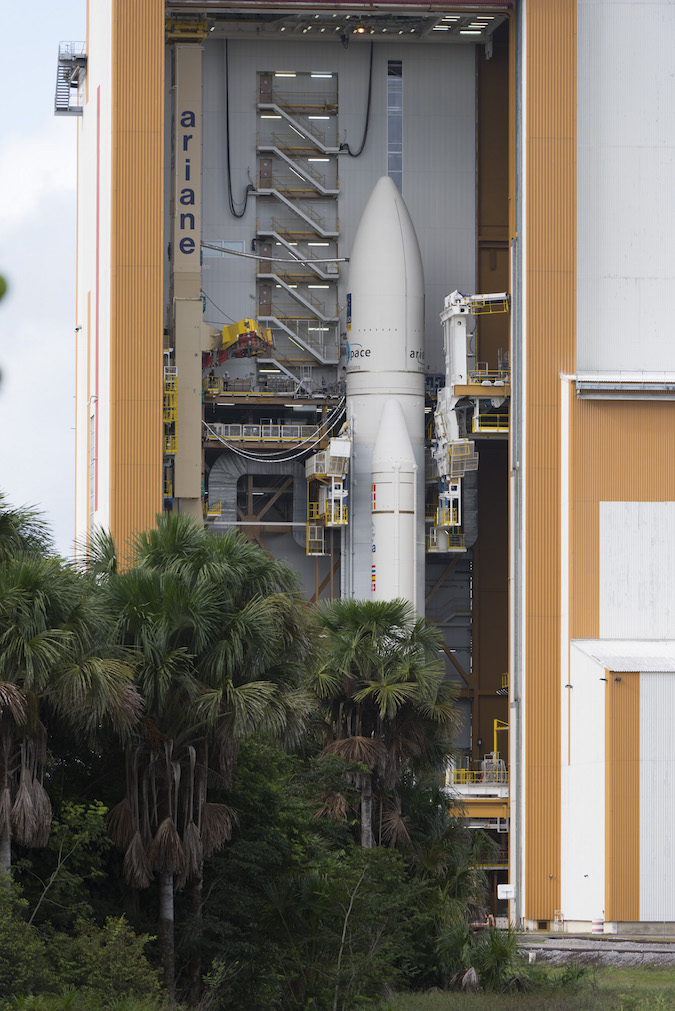
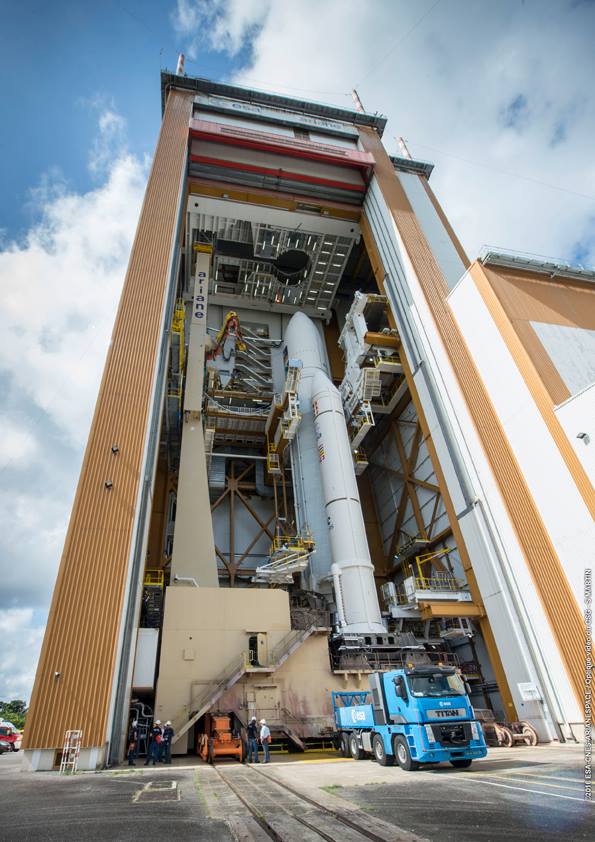
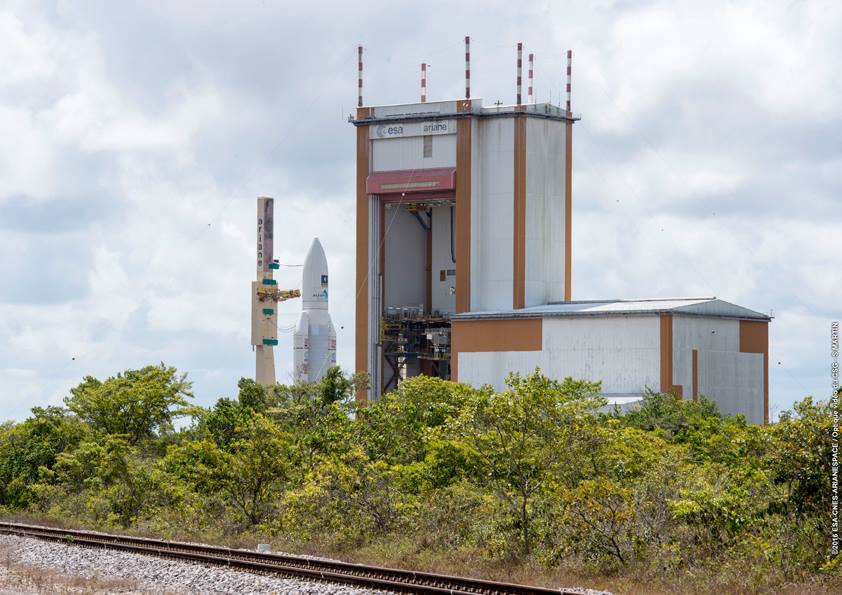
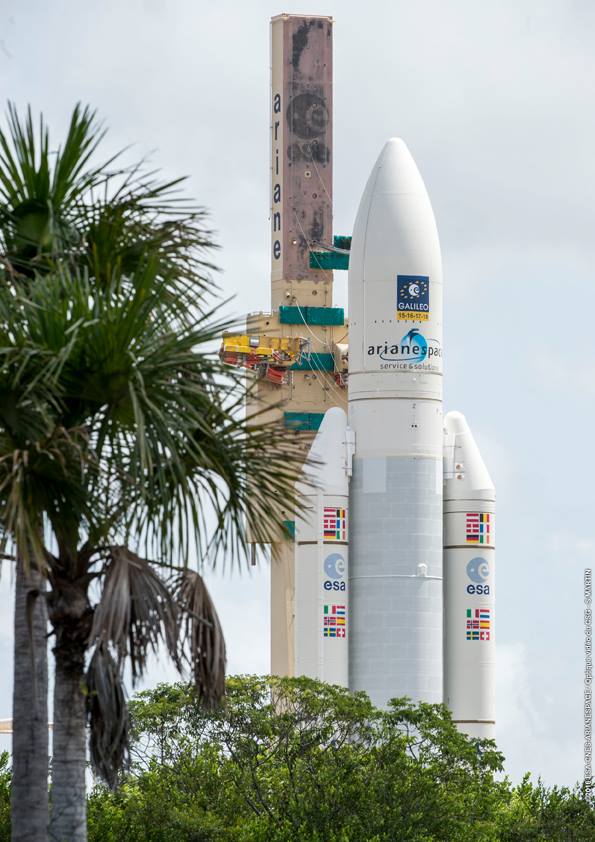
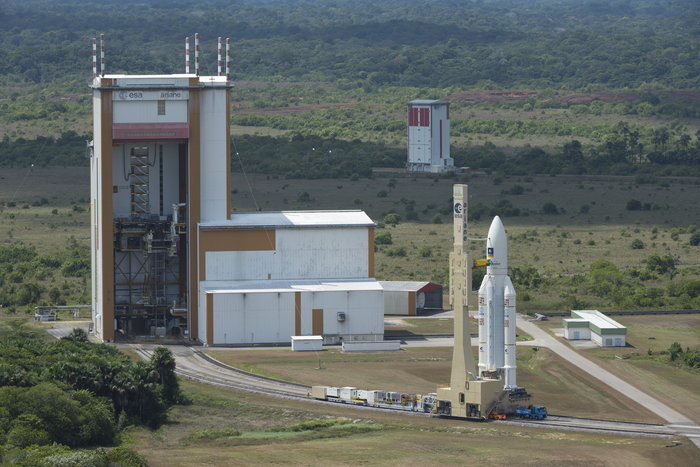
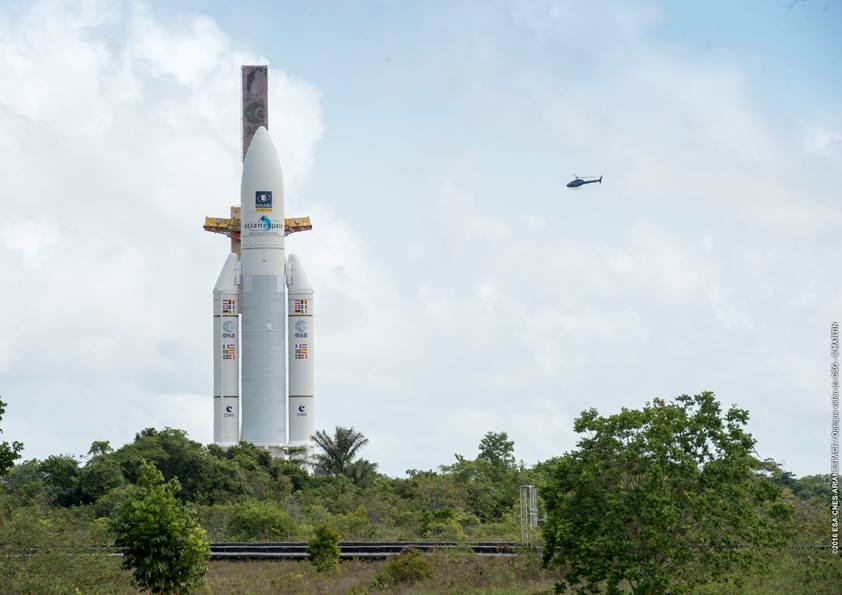
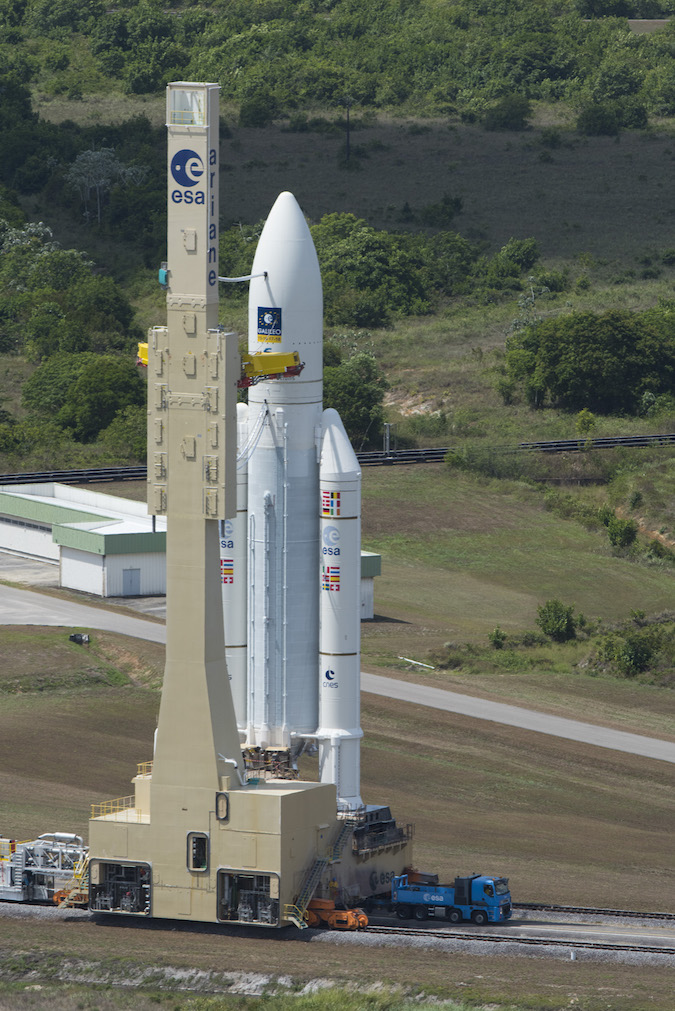
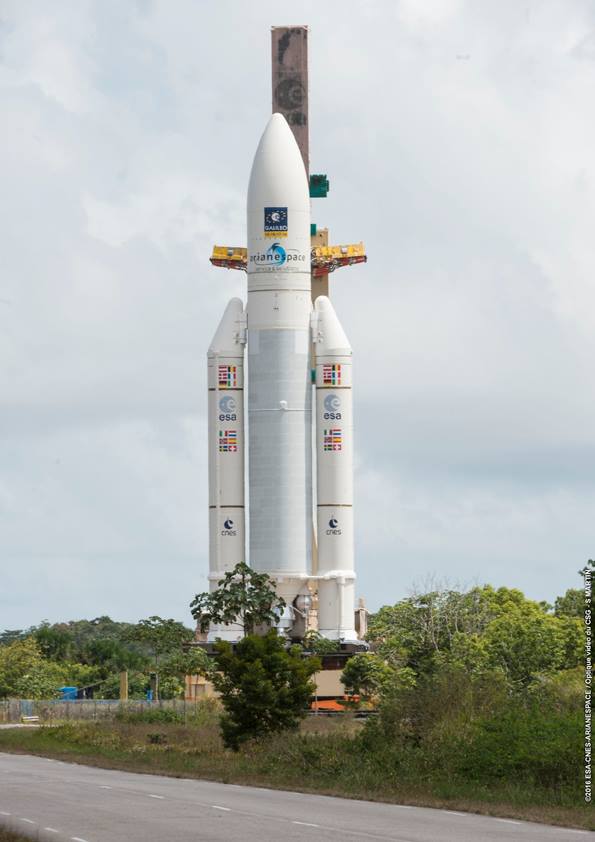
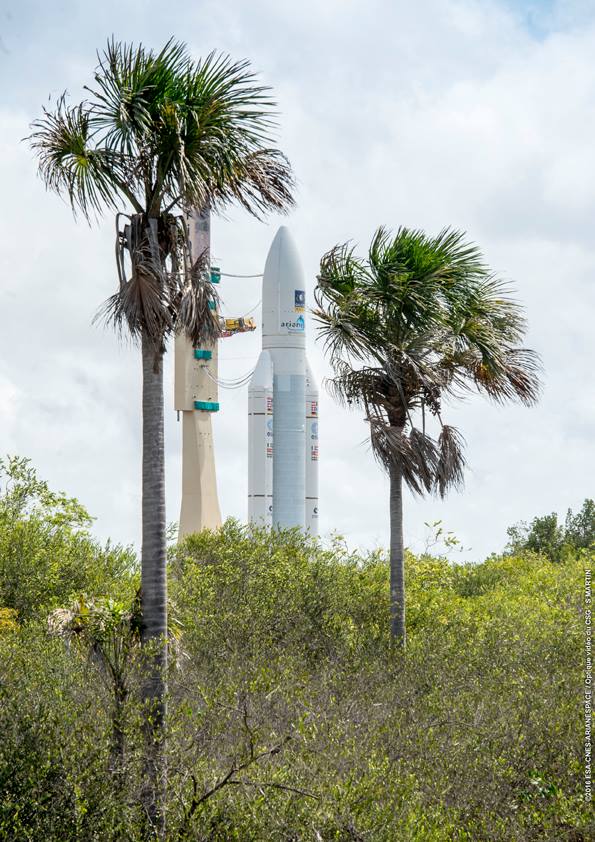
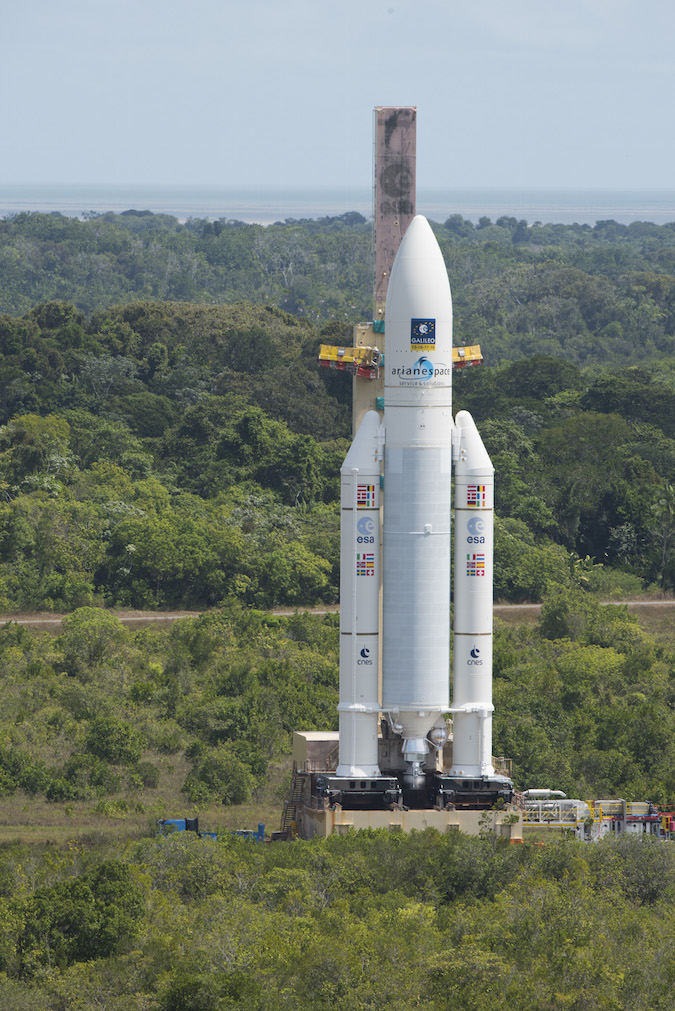
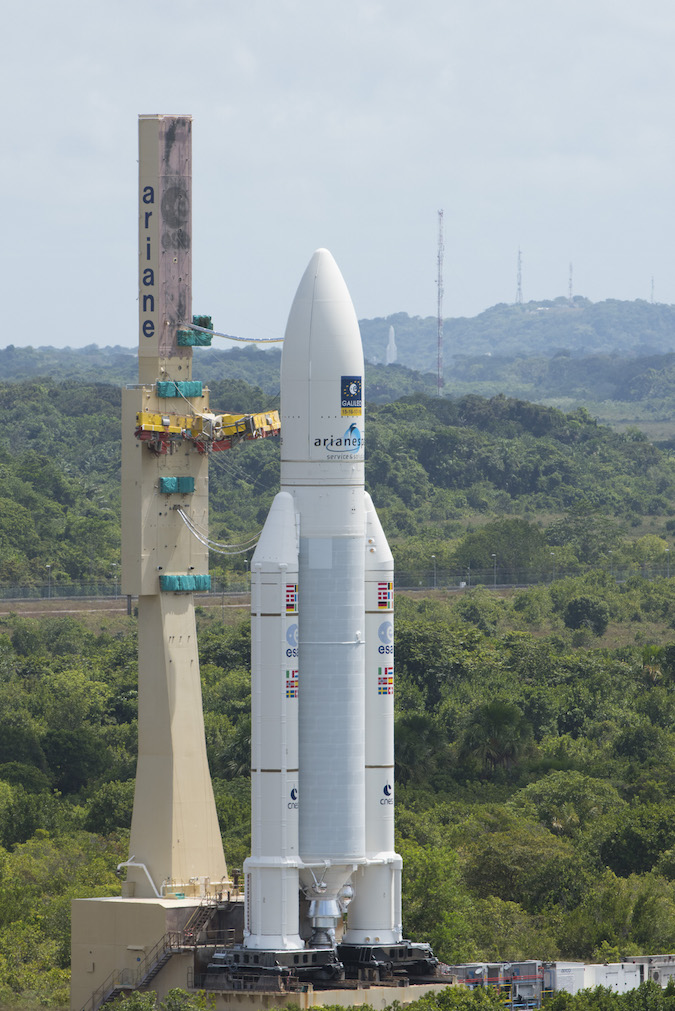
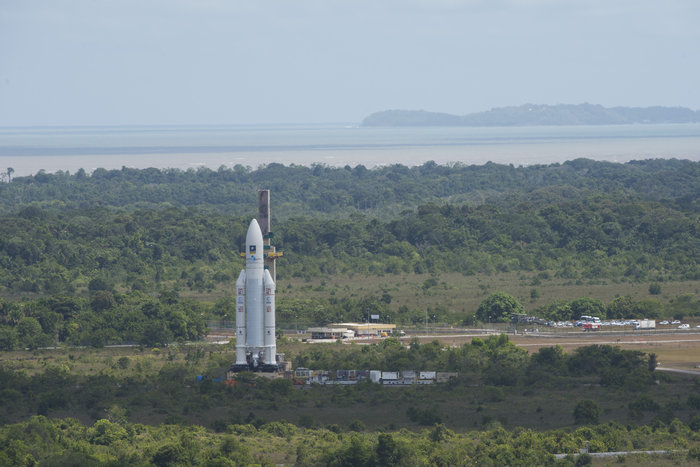
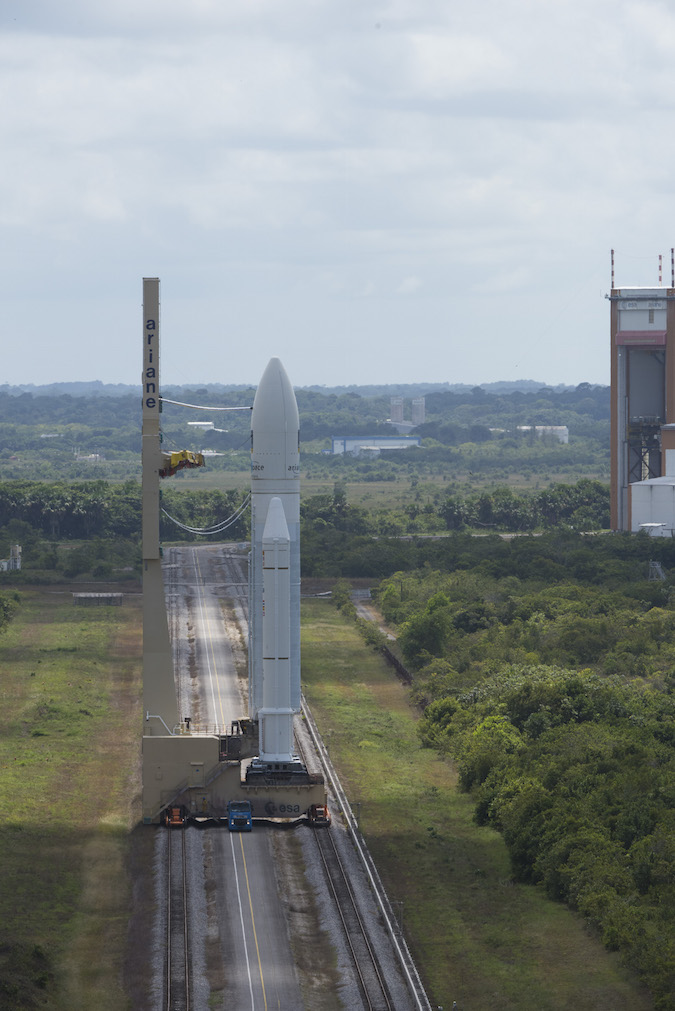
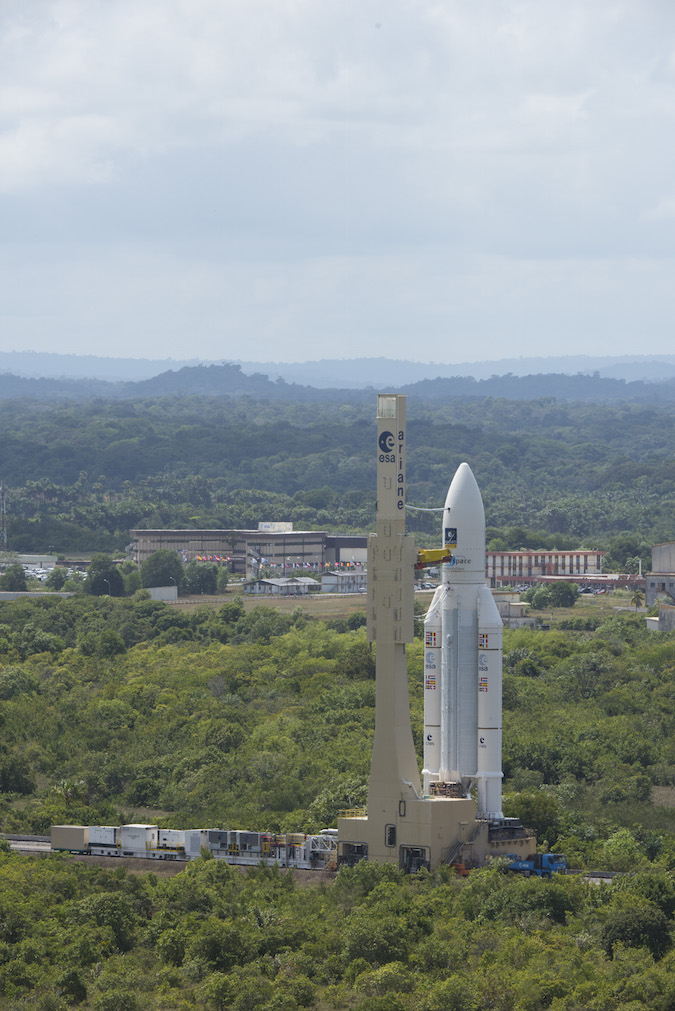
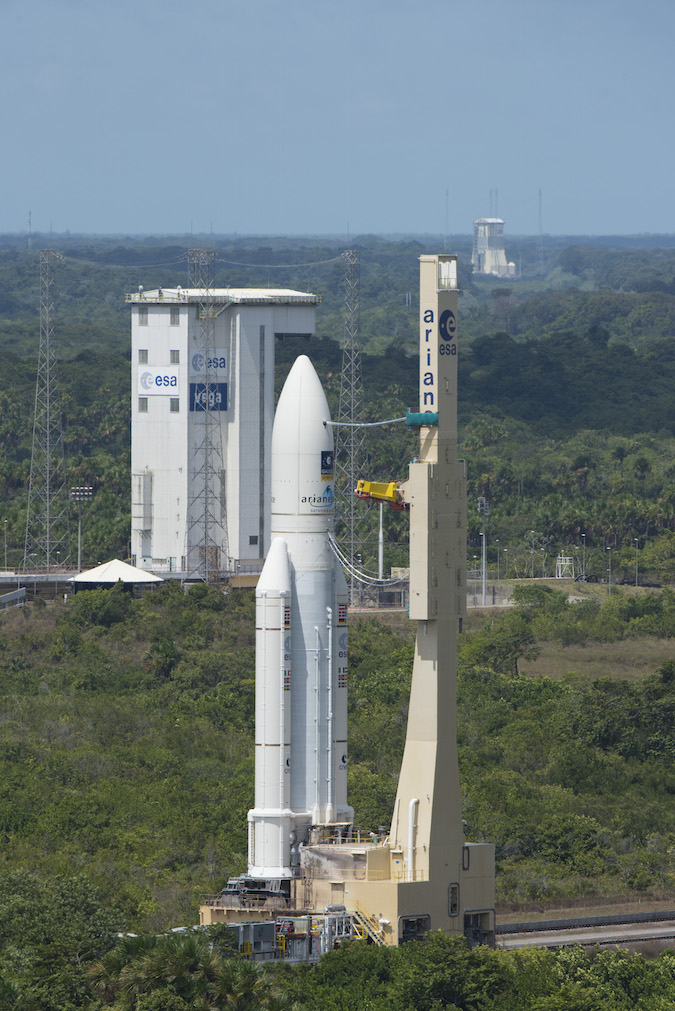
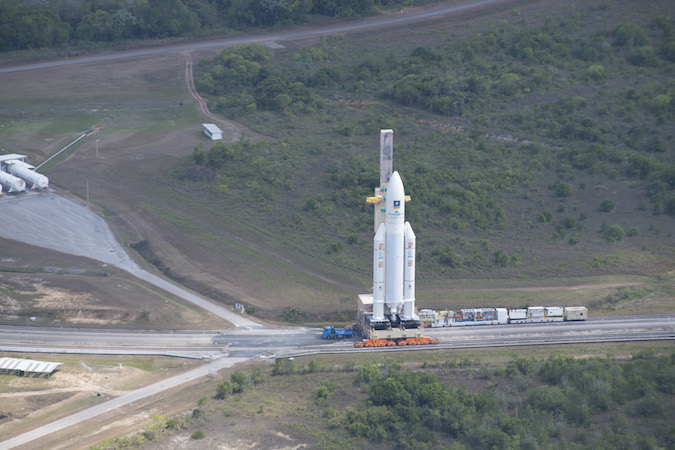
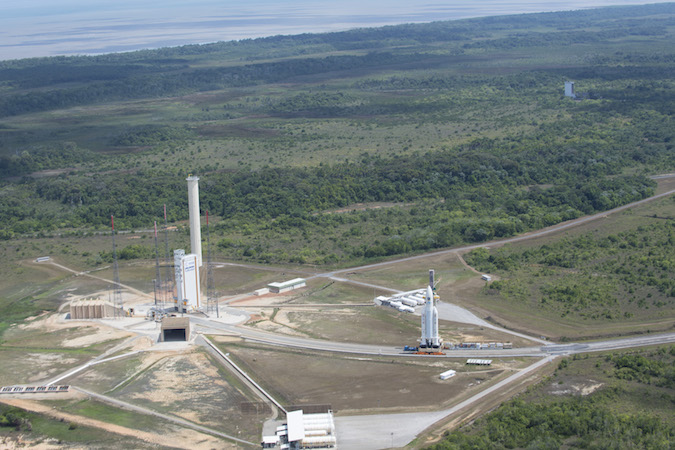
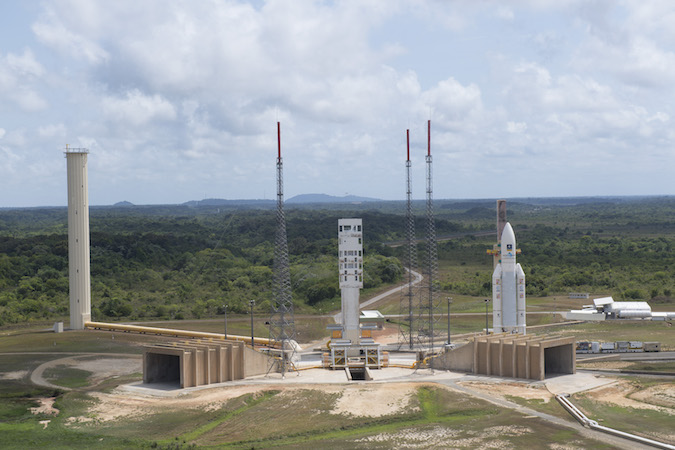
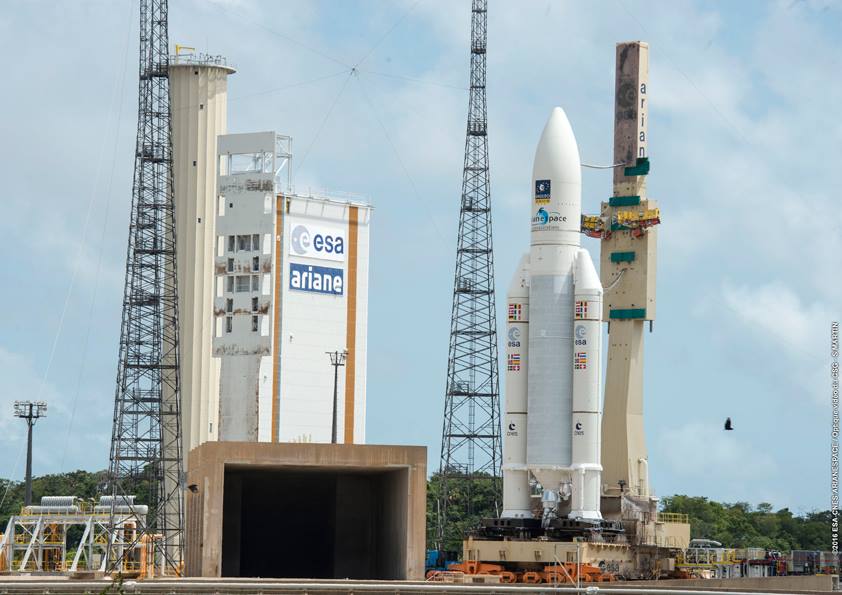
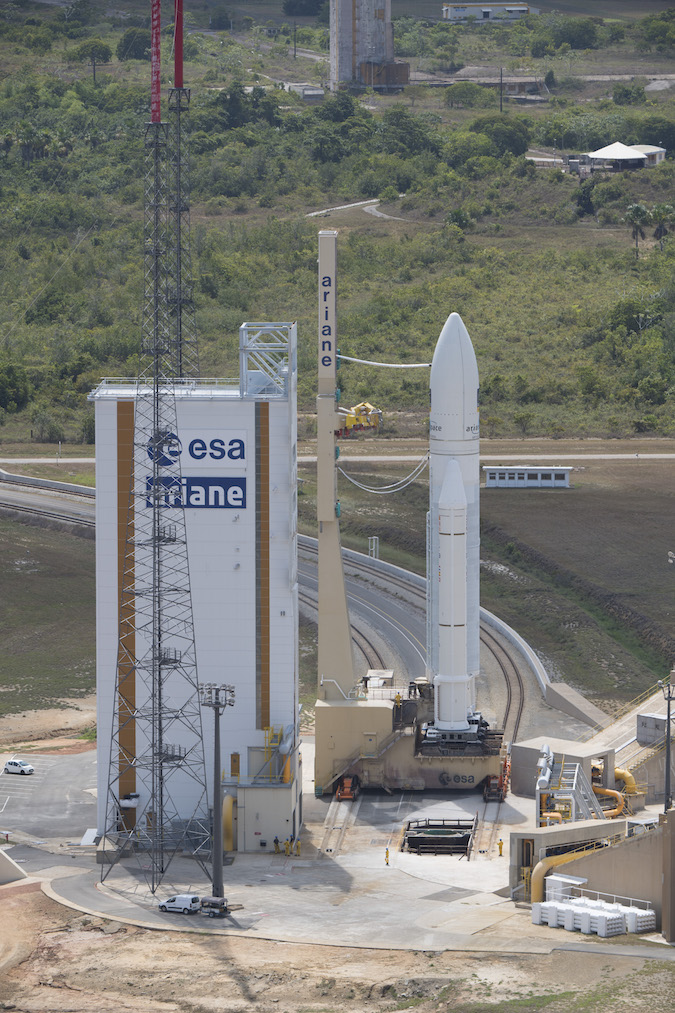
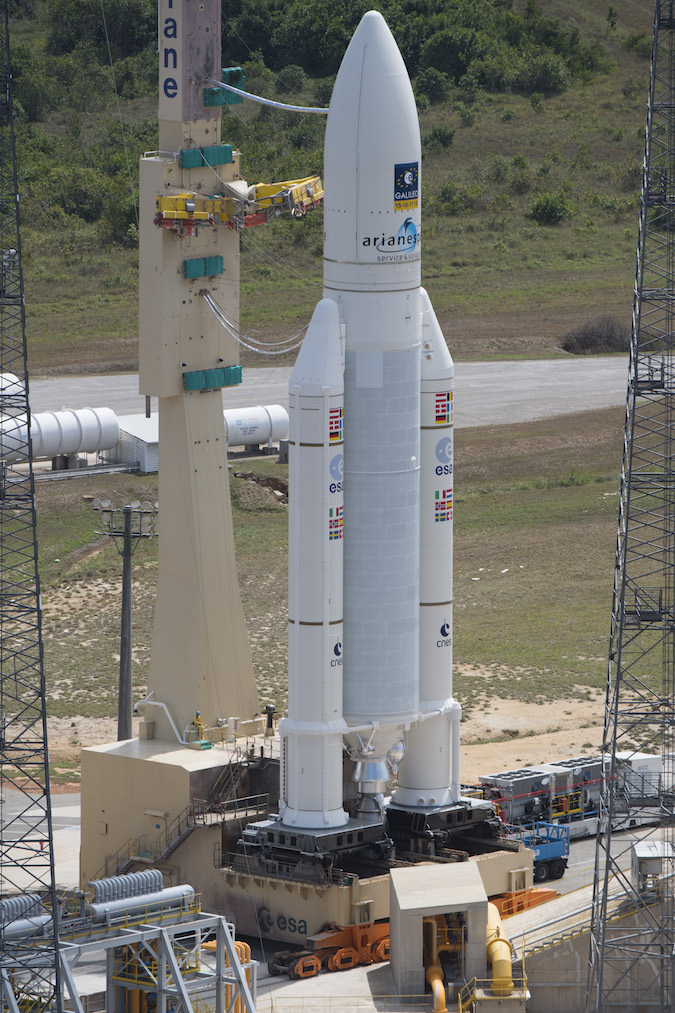
Email the author.
Follow Stephen Clark on Twitter: @StephenClark1.

